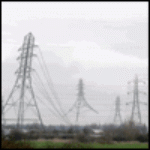 |
Audio Asylum Thread Printer Get a view of an entire thread on one page |
For Sale Ads |
 |
Audio Asylum Thread Printer Get a view of an entire thread on one page |
For Sale Ads |
172.117.191.20
In Reply to: RE: How many nukes can be made with 900 pounds? posted by Mike B. on June 24, 2025 at 11:46:55
Assuming they only made it to 60%.
For most commercial nuclear power reactors, the uranium fuel is enriched to 3 to 5 percent uranium-235. This is considered low-enriched uranium (LEU).
Higher levels of enrichment, above 20%, are used for weapons and some specialized reactor types.
Here's a more detailed explanation:
Natural Uranium:
Naturally occurring uranium contains only about 0.7% of the fissile isotope uranium-235.
Enrichment Process:
To make it suitable for most reactors, the uranium needs to be enriched, meaning the concentration of uranium-235 is increased.
Low-Enriched Uranium (LEU):
Commercial nuclear power plants typically use LEU, which is uranium enriched to between 3% and 5% uranium-235.
High-Enriched Uranium (HEU):
Uranium enriched to 20% or more is considered HEU and is used in nuclear weapons and some research reactors.
.
2022/03/30 Historical Records CENSORED
Follow Ups:
Wonder what is the reduction of mass of U235 is going from LEU to HEU?
In a typical comparison of Low Enriched Uranium (LEU) and Highly Enriched Uranium (HEU) used in applications like Kilopower reactors, LEU systems result in a
mass increase compared to HEU systems, not a reduction.
This increase in mass for LEU systems is significant, estimated to be around 700 to 800 kg. This is because LEU, having a lower concentration of the fissile U-235 isotope, requires a greater total mass to achieve the same criticality and power output as a smaller amount of HEU. For example, in the Kilopower reactor concept, eight times more LEU than HEU is needed to make the reactor critical.
The higher mass of LEU systems can have important implications, especially for applications where minimizing mass is crucial, such as space missions. For example, using LEU instead of HEU for space missions could necessitate the use of a larger launch vehicle, potentially impacting mission science, increasing mission time, or even preventing the missions altogether.
In summary, when comparing LEU and HEU for applications like the Kilopower reactor, LEU systems are heavier due to the lower concentration of the fissile U-235 isotope, requiring a larger total mass to achieve the same criticality and power output as HEU.
.
2022/03/30 Historical Records CENSORED
Apologies, my post was not clear. What I was asking what is the reduction of total mass of total material as when going from LEU to HEU.
e.g. if you have 600 lbs of LEU material, containing x amount of U235. The mass of the HEU would be lower and also contain x amount of U235.
I did a better Google search and kind of found the answer.
"I did a better Google search and kind of found the answer. "
What "kind of" answer did you find? And where?
Thanks.
*********
We are inclusive and diverse, but dissent will not be tolerated.
Here is what I just located on it
A considerable amount of enriched uranium, estimated to be around 900 pounds (approximately 400kg), is currently unaccounted for in Iran. This stockpile was reported to be missing after US strikes on Iranian nuclear facilities.
The International Atomic Energy Agency (IAEA) has confirmed it has lost track of this material, which is enriched to 60% purity. This level of enrichment is below weapons-grade (around 90%), but experts believe it is enough to make up to 10 nuclear weapons if further enriched.

It is probably enriched enough for dirty bombs.
When you search for missing nuclear material, a lot of disturbing information comes up, including missing bombs that have fallen out of planes.
There is a farm field in the Midwest that has a small plot of land owned by the goobermint supposedly containing a missing nuke they couldn't unearth after a plane crash.
.
2022/03/30 Historical Records CENSORED
This post is made possible by the generous support of people like you and our sponsors: